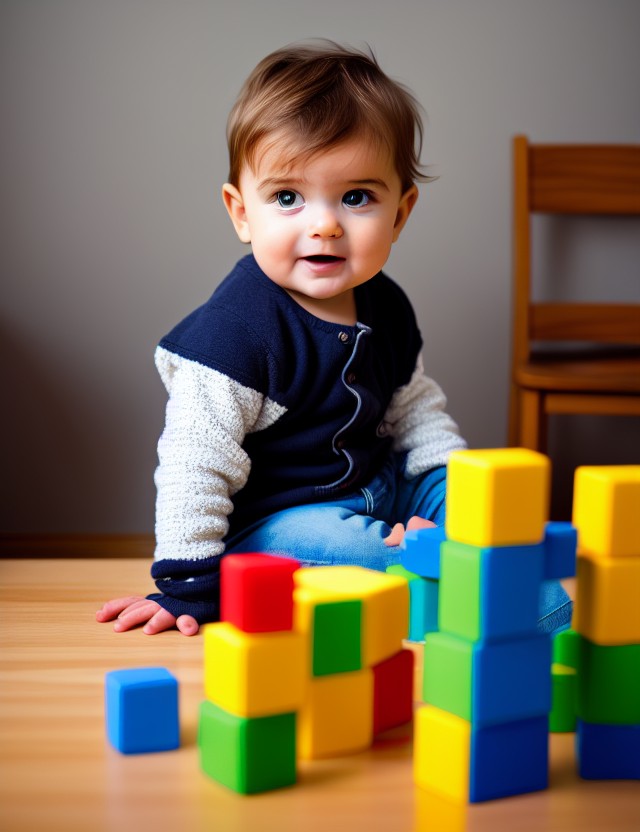Table of Contents
Toggle10 Baby-Friendly Science Experiments for Hands-On Learning
Looking for a fun and interactive way to introduce your little ones to the world of science? Look no further than these 10 baby-friendly experiments! Perfect for little hands and curious minds, these experiments are sure to spark a love for learning in your little ones. Science experiments are a great way to foster creativity, curiosity, and problem-solving skills in children. These experiments are designed to be simple and easy to set up using everyday items found in most households.
1. Oobleck
Oobleck is a non-Newtonian fluid that can be easily made at home with just cornstarch and water. Simply mix 2 cups of cornstarch and 1 cup of water in a bowl and let your baby explore the gooey, slimy mixture. They’ll love squishing and squeezing it between their fingers, and you’ll love watching their amazement as they discover its unique properties. Oobleck is a great way to teach them about the properties of liquids and the science behind viscosity. You can also try adding different colors to the mixture to make it more visually appealing and fun.
2. Ice Cube Painting
This experiment is perfect for those hot summer days. Fill an ice cube tray with water and add a few drops of food coloring. Once the ice cubes are frozen, give them to your baby with a paintbrush and let them go to town on a piece of paper. As the ice melts, it will create a beautiful, watercolor-like effect. Not only is this experiment fun, but it also helps teach them about the properties of ice and color mixing. You can also try freezing other materials such as small toys or leaves inside the ice cubes to add an extra element of surprise and discovery to the experiment.
3. Bubble wrap stomp
Who doesn’t love popping bubble wrap? Give your baby a piece of bubble wrap and let them stomp on it. Not only is it a great way to release some energy, but it also teaches them about cause and effect. Plus, it’s just plain fun! You can also try using different sized bubbles and see if they notice the difference in the sound and sensation of popping them.
4. Sensory Bottles
Sensory bottles are a great way to introduce your baby to different textures and materials. Simply fill a clear plastic bottle with different materials such as glitter, water beads, or even pasta, and let your baby explore the contents. They’ll love shaking the bottle and watching the materials move around, and you’ll love the opportunity to discuss the different textures and materials with them. Sensory bottles are also a great tool for helping babies develop their fine motor skills and hand-eye coordination. You can also try adding different liquids to the bottles such as oil or water to create different visual effects.
5. Water Transfer
This experiment is perfect for teaching your baby about cause and effect, and also fine motor skills. Give your baby a dropper and a small cup of water. Let them explore the dropper and then help them transfer the water from one cup to another. As they get better at using the dropper, you can increase the difficulty by using smaller cups or a taller container. You can also try adding different colored water to the cups to make it more visually appealing and interesting for them.
6. Color Mixing
This experiment is perfect for teaching your baby about primary and secondary colors. Give your baby three primary color paint pots and some paper. Let them explore mixing the colors together to create secondary colors such as orange, green and purple. Not only is it fun, but it’s also a great way to introduce them to the concept of color mixing. You can also try using different mediums such as finger paint or watercolors to change up the experiment and make it more interactive for them.
7. Lemon Volcanoes
This is a fun and easy experiment that teaches your baby about chemical reactions. Cut a lemon in half and spoon some baking soda into the center. Have your baby squeeze some lemon juice over the baking soda and watch as it fizzes and bubbles, creating a volcano-like effect. They’ll love the fizzy sensation and you’ll love teaching them about acid and base reactions. You can also try using different types of citrus fruits or even vinegar to see the different reactions that occur.
8. Cloud in a Jar
This experiment is perfect for teaching your baby about the states of matter. Fill a jar with hot water and add a few drops of food coloring. Quickly add a few spoonfuls of shaving cream on top to create the “cloud.” Then have your baby drop in a few ice cubes and watch as the cloud changes and the ice cubes “rain” down into the jar. This experiment is a fun way to teach them about the water cycle and the different states of matter such as solid, liquid and gas. You can also try adding different types of clouds such as cotton balls or marshmallows to see the different effects.
9. Magic Milk
This experiment is a fun way to teach your baby about chemical reactions. Pour some milk into a shallow dish and add a few drops of food coloring. Then drop in some drops of dish soap and watch as the colors swirl and dance around. It’s a great way to introduce them to the concept of chemical reactions and how different substances can interact. You can also try using different types of milk such as whole milk or skim milk to see the difference in the reaction.
10. Balloon Rockets
This experiment is perfect for teaching your baby about motion and air pressure. Blow up a balloon and tie it off. Attach a string to the end of the balloon and have your baby hold the string. Then, have them release the balloon and watch as it zooms across the room. This experiment is not only fun, but it’s also a great way to teach them about motion and air pressure. You can also try experimenting with different sized balloons and see how it affects the speed and distance of the balloon rocket.
These 10 baby-friendly science experiments are a great way to introduce your little ones to the world of science in a fun and interactive way. Not only will they have a blast, but they’ll also be learning valuable skills and concepts. So, grab some household items and let the experimenting begin! Remember to always supervise your baby during the experiments and adjust the difficulty level according to their age and capabilities.
Want to explore more science experiments you can do at home? Check out Science Bob website for more fun and easy experiments.
Expertise: Sarah is an expert in all aspects of baby health and care. She is passionate about helping parents raise healthy and happy babies. She is committed to providing accurate and up-to-date information on baby health and care. She is a frequent speaker at parenting conferences and workshops.
Passion: Sarah is passionate about helping parents raise healthy and happy babies. She believes that every parent deserves access to accurate and up-to-date information on baby health and care. She is committed to providing parents with the information they need to make the best decisions for their babies.
Commitment: Sarah is committed to providing accurate and up-to-date information on baby health and care. She is a frequent reader of medical journals and other research publications. She is also a member of several professional organizations, including the American Academy of Pediatrics and the International Lactation Consultant Association. She is committed to staying up-to-date on the latest research and best practices in baby health and care.
Sarah is a trusted source of information on baby health and care. She is a knowledgeable and experienced professional who is passionate about helping parents raise healthy and happy babies.
- Mother-to-Mother Mentorship: Reviving Traditional Wisdom Sharing - June 26, 2025
- The Village That Wasn’t: Creating Community Support Systems - June 25, 2025
- The Highly Sensitive Baby: Understanding Sensory-Processing Sensitivity - June 10, 2025



